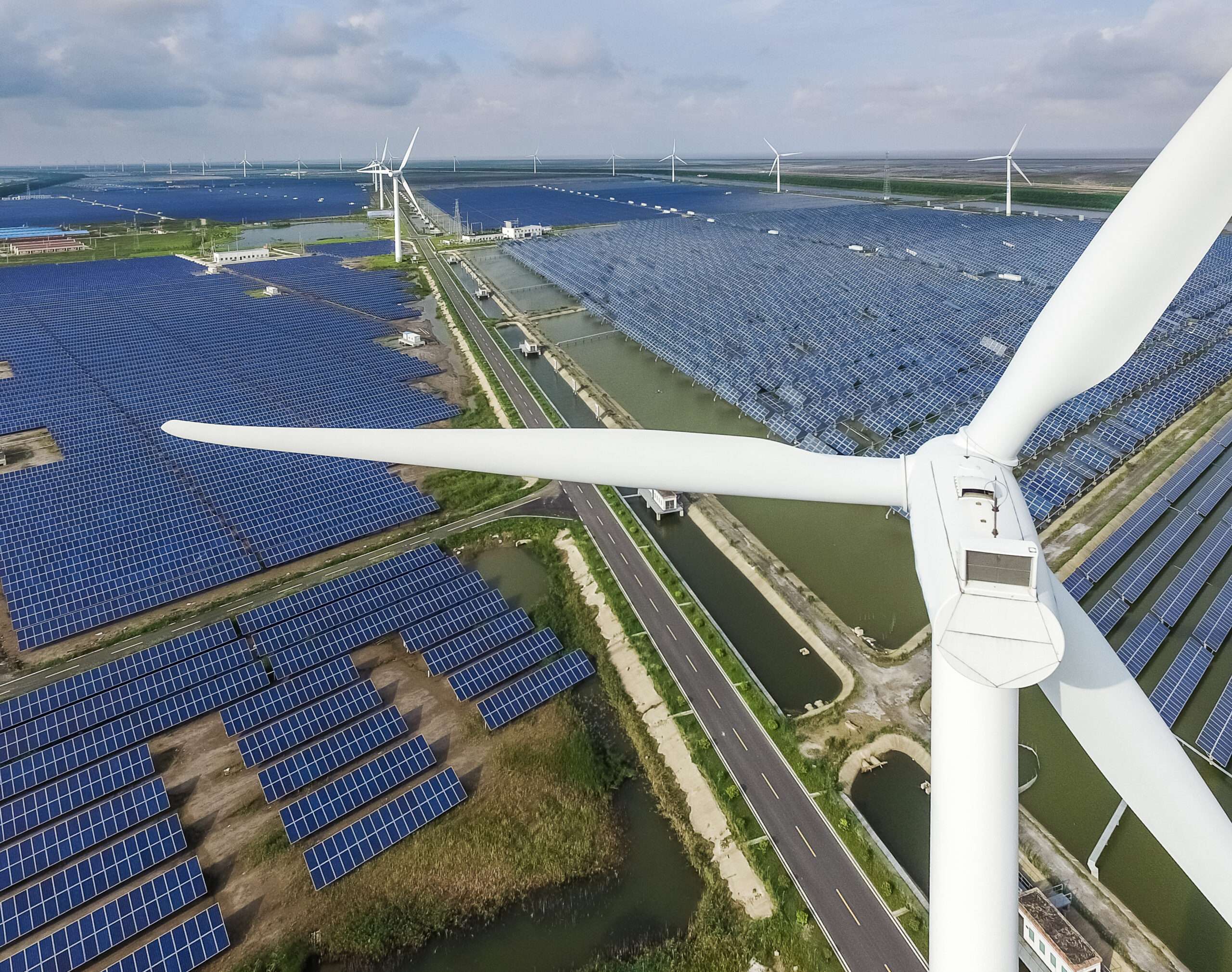
Germany idiotically shut down its last three nuclear power plants last month. Until 2011, the country obtained one-quarter of its electricity from 17 nuclear power plants. As a December 2022 study in Scientific Reports shows, turning off this carbon-free energy source is incredibly short-sighted for combatting climate change and protecting natural landscapes.
The European researchers behind the new study do an in-depth analysis of how much land and sea area it would take to implement the Net Zero by 2050 roadmap devised by the International Energy Agency (IEA) in 2021. The IEA outlines an energy transition trajectory to cut global carbon dioxide emissions from burning fossil fuels to zero by 2050. The Net Zero goal is to keep the increase of global average temperature below the threshold of 1.5 degrees Celsius above the late 19th-century baseline. “This calls for nothing less than a complete transformation of how we produce, transport and consume energy,” notes the IEA.
The Scientific Reports study finds that implementing the IEA’s roadmap requires that much of the world’s agricultural and wild lands be sacrificed to produce energy. Biofuels, both liquid and solid, are especially egregious destroyers of the landscape. On the other hand, the energy source that spares the most land is nuclear power. In addition, electricity produced by fission reactors is not intermittent the way that vastly more land-hungry solar and wind power are.
Let’s go to the figures. The European researchers illustrated the vast differences in the amount of energy that can be produced per unit of land by calculating what percentage of land would be needed to meet 100 percent of emissions-free primary energy demand in 2050. Primary energy refers to raw fuels before they have been converted into other forms of energy like electricity, heat, or transport fuels. They calculate that nuclear power generation could supply all the energy demand in 2050 while occupying just 0.016 percent of the world’s land area. On the other hand, using biomass to generate the same amount of energy would take up more than 96 percent of the world’s land area.
Turning to the IEA’s Net Zero roadmap, the team calculates that the amount of land occupied by the stunted trajectory of nuclear power plants in the IEA scenario will expand from 403 square kilometers (156 square miles)today to 820 square km (317 square miles) in 2050. The area devoted to growing biomass for energy production (liquid and solid fuels) expands from 653,000 square km (252,000 square miles) to 2,981,000 square km (1,151,000 square miles). It is worth noting that 208,000 square km (80,300 square miles) is now annually plowed up for biofuel production in the U.S. The amount of land covered by onshore wind turbines would rise from 79,000 square km (30,500 square miles) to 995,000 square km (384,000 square miles), and the area covered by solar photovoltaic would increase from 9,400 square km (3,630 square miles) to 270,000 square km (104,000 square miles).
“A sixfold increase will occur in the spatial extent of power generation, from approximately 0.5% of land areas used for electric generation in 2020 to nearly 3.0% of land areas in 2050 (i.e., 430 million hectares of land),” report the researchers. “The world will be electrified by requiring an area roughly equal to the entire European Union (EU), which is one and a half times the size of India. The major contributor to increasing land use will be related to power generation from biomass.”
As the Wall Street Journal reported earlier this week, wind and solar projects occupying massive amounts of land increasingly get NIMBY pushback from disgruntled neighbors. Energy analyst Robert Bryce, author of A Question of Power: Electricity and the Wealth of Nations (2020), has compiled a database showing that nearly 500 renewable energy projects have been rejected or restricted over the past decade.
The European researchers calculated that nuclear power plants sited on just 20,800 square km (8,000 square miles) of land could supply all of the carbon-free electricity demanded in 2050. That’s less land than is occupied by the state of Vermont.
Over at Tech Xplore, study co-author and energy conversion researcher at Norwegian University of Science and Technology Jonas Kristiansen Nøland points out that “the spatial extent of nuclear power is 99.7% less than onshore wind power—in other words, 350 times less use of land area.” He adds, “An energy transition based on nuclear power alone would save 99.75% of environmental encroachments in 2050. We could even remove most of the current environmental footprint we have already caused.”
Nuclear power massively spares land for nature while producing 24-7 emissions-free electricity. That’s why closing down 17 perfectly good nuclear power plants is environmentally stupid.

